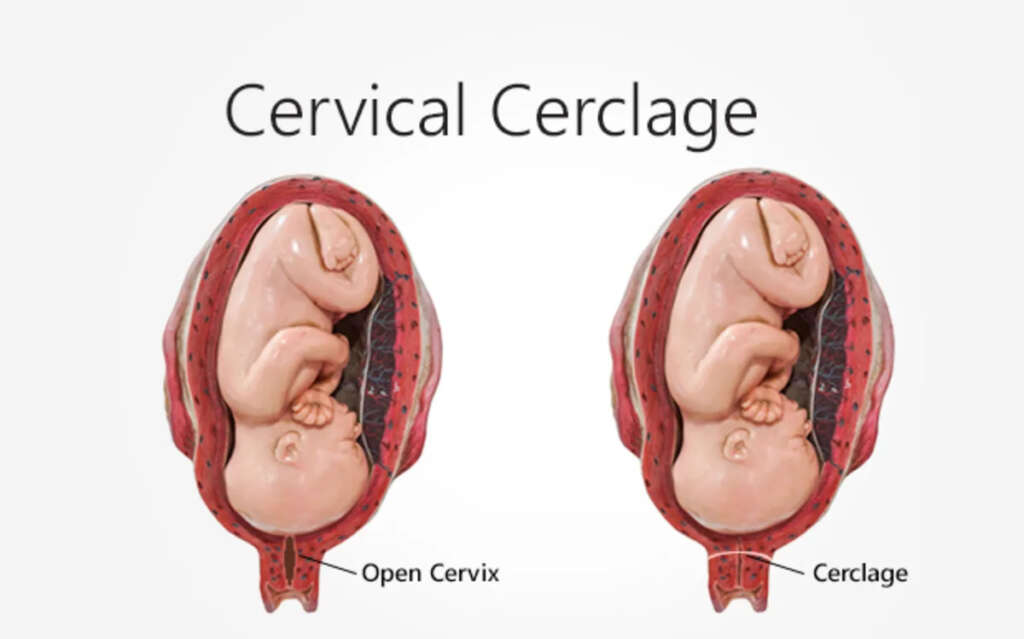A cervical cerclage, also known as a cervical stitch, is a surgical procedure used to prevent the cervix from opening prematurely during pregnancy. The cervix is a funnel-shaped tissue that dilates naturally during childbirth to allow the baby to exit the uterus via the vagina.

This procedure is typically performed in a hospital or surgical centre; most patients can return home the same day.
Why Is It Done?
When there is concern that the cervix will open too soon, potentially leading to premature delivery or miscarriage, cervical cerclage is recommended.
This procedure may be recommended by your doctor if:
- You have a history of second-trimester pregnancy loss with painless cervix dilation.
- You’ve previously undergone a cervical cerclage.
- Your cervix starts to open during the second trimester without pain.
- You’ve given birth before 34 weeks of pregnancy and had a short cervical length before 24 weeks.
When Is It Done?
Ideally, a cervical cerclage should be done 12–14 weeks into your current pregnancy if you have experienced problems with previous pregnancies. However, the procedure can take up to 24 weeks. Beyond this point, there is a risk of rupturing the amniotic sac, which could result in premature birth.
When Is It Not Recommended?
A cervical cerclage may not be suitable if you have preterm labour, vaginal bleeding, a uterine infection, amniotic sac leakage or rupture before 37 weeks of pregnancy, or if the amniotic sac protrudes through the cervix. This procedure is typically recommended for pregnancies with a single baby.
